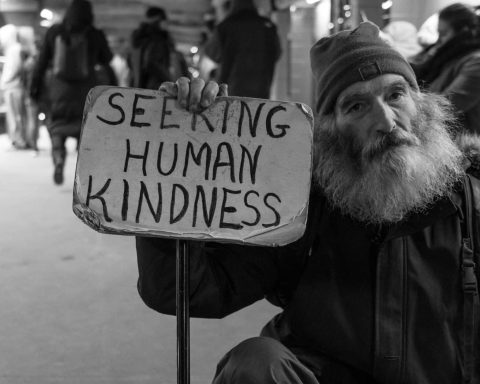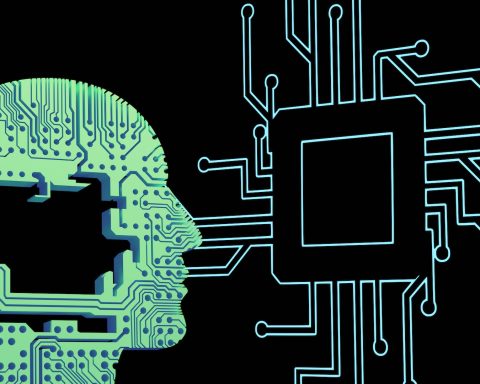Jeremy Howick is the Director of the Stoneygate Centre for Excellence in Empathic Healthcare at the University of Leicester and author of a bestselling book. He is on Twitter: @jeremyhowick
Dinesh Palipana is an emergency doctor, a lawyer, and was Australia’s Person of the Year in 2021.
Hajira Dambha-Miller is an NIHR Clinical Lecturer at the University of Southampton and a GP. She is on Twitter: @HDambhaMiller
Kamlesh Khunti, CBE is Professor of Primary Care Diabetes and Vascular Medicine at the University of Leicester. He is on Twitter: @kamleshkhunti
Diversity is on the rise globally. To mention just a few of diversity’s dimensions in the UK, 10 million (14.5%) of the country’s citizens were born outside the UK, 9 million (14%) of the population is non-white, and there are 6 religions with at least 250,000 adherents.1 A similar picture presents itself in many other parts of the world. In the US, 45 million (14%) of the population were born outside the country, 204 million (almost 40%) belong to ethnic minority communities, and there are 11 religions with at least 1 million adherents.2 Within the same hour in a clinic, a healthcare practitioner may see a male farmer nearing retirement with back pain, who has never spoken about his feelings, a female immigrant from Syria with respiratory problems, who is worried about paying for her care, a young student using a wheelchair, who is suffering from depression, and a transgender patient attending a routine check-up.
Attempts to understand and appropriate ways to express understanding vary from person to person and culture to culture.
This diversity is a cause for celebration. It can also present a barrier to empathy, which is frequently defined as understanding, expressing the understanding, and therapeutic action.3 Attempts to understand and appropriate ways to express understanding vary from person to person and culture to culture. A reassuring touch may be the expected norm in some cultures, but a violation of morals in others. Asking a patient how they feel about a proposed treatment may delight a well-informed patient, yet signal incompetence to a farmer who may expect and accept that their doctor knows best. Spontaneously opening the door for an elderly woman may be appreciated, yet the same act could offend someone in a wheelchair who prefers to do it themselves.
A barrier to empathic care is a barrier to good care
Barriers to empathic care are barriers to effective care. Empathic care is a cornerstone of person-centred care,4 and a growing body of increasingly robust evidence is showing that lack of empathy causes harm,5 while empathic care improves patient outcomes. A cohort study of 867 people with type II diabetes found an association between empathic care and reduced mortality.6 Meanwhile, several randomised trials also suggest that empathic care reduces patient pain while improving their satisfaction with care.7 A parallel series of randomised trials also shows that therapeutic empathy can be taught. 8 A happy side effect of empathy’s benefit to patients is that it also appears to decrease the risk of burnout among healthcare professionals.9 A caveat to the evidence on empathy’s effectiveness in healthcare is that most of the large studies have involved predominantly white patients. The extent to which empathic care benefits patients from ethnic minorities and other diverse groups is therefore an area where future research is required.
Relative lack of healthcare practitioner diversity
The relative lack of diversity among healthcare practitioners could exacerbate the challenge to empathy posed by increasingly diverse patients. In the US10 and UK11 most healthcare practitioners identify as ‘White’. Healthcare practitioners are also better educated than average, but this is a double-edged sword. While we need well educated doctors, they are more comfortable with medical jargon than most patients, and using medical jargon has been can inhibit good communication and even harm patients.12 This problem is aggravated if the patient’s first language is not English. While the effect of the relative homogeneity of practitioners is under-researched, we know that diversity of practitioners matters. Female practitioners are rated by patients as being more empathic than males,13 and practitioner ethnicity seems to influence empathy levels.14
Exposing patients to healthcare professionals from a diverse range of ethnic and social backgrounds, and vice versa, creates fertile ground for fostering unconscious (and, perhaps, conscious) normalisation and acceptance of different opinions, cultures and beliefs.
Differences between practitioners and patients can affect empathic care. A secondary analysis of data from over 25,000 practitioners found that their implicit attitudes towards disabled patients can be negative.15 Furthermore, a systematic review of 18 studies with almost ten thousand patients found that patients with lower socio-economic status experienced lower levels of empathy from their clinicians, and white patients experienced higher levels of empathy than their ethnic minority counterparts.16 A medical trainee in one qualitative study stated: “It is challenging to empathise with those patients who do not understand your language. You can extract some factual information; however, you cannot build up an empathetic relationship with the patient.”17 Left unaddressed, the problems arising from differences between practitioners will get worse, since diversity among practitioners is increasing at a slower rate than the diversity of patients, particularly in relation to forms of diversity such as disability.18
Embracing diversity as a solution
While patient diversity is a potential impediment to empathy, it also points towards a solution.19 Exposing patients to healthcare professionals from a diverse range of ethnic and social backgrounds, and vice versa, creates fertile ground for fostering unconscious (and, perhaps, conscious) normalisation and acceptance of different opinions, cultures and beliefs. Diverse environments also provide opportunities for patients and practitioners to learn the necessary skills to be able to adapt communication, clinical and empathic practices to the person they are working with, whatever that individual’s background. By contrast, when practitioners work within a homogeneous group to which they already belong, they may rely on (perhaps often correct) assumptions about patients, thus allowing their ‘empathy muscle’ to atrophy. Embracing diversity can therefore transform it from a barrier to a facilitator of empathic care.
Suggestions for using diversity as a tool to enhance empathy
There are several concrete things that can be done to turn diversity from a barrier to a facilitator of empathy.
- Communicate in plain English. Communicating in ways that the lay public can understand is a simple yet powerful tool that can lay the groundwork for empathic care and will reduce obstacles to empathic care in many different groups, especially for patients whose first language is not English.
- Embrace diversity as an opportunity to stimulate the empathy ‘muscle’. Faced with patients who are different, adopt an attitude of “empathic curiosity”. Jodi Halpern, who coined the term “empathic curiosity” encourages us to begin by recognizing that we do not understand what people are thinking or feeling, then allowing our emotional responses to guide our imagination (supplemented, of course, by communication with the patient!) what matters to the patient.
- Introduce empathy and diversity training. The value of diversity as an empathy enhancing tool can be integrated into practitioner education in the art and science of therapeutic empathy. Similarly, cultural competency can be developed by discussing and reflecting on the impact of cultural diversity on health throughout professional training.
- Encourage students from all walks of lives and cultures to attend medical school.
Conclusion
Most developed countries have increasingly diverse populations. This context presents a challenge to empathic healthcare, as well as an opportunity. Better communication, using diversity as an opportunity to train the empathy “muscle”, and formal training in empathy and diversity can help transform diversity from a potential barrier to a catalyst for empathic care. Such a change is essential for medicine to achieve its aim of improving patients’ lives in an increasingly diverse world.
References
- Office of National Statistics. Census 2021 data: Office of National Statistics; 2022 [Available from: https://www.ons.gov.uk/census.
- United States Census Bureau. 2020 Census: United States Census Bureau; 2021 [Available from: https://www.census.gov/programs-surveys/decennial-census/decade/2020/2020-census-main.html accessed 2 September 2022.
- Mercer SW, Maxwell M, Heaney D, et al. The consultation and relational empathy (CARE) measure: development and preliminary validation and reliability of an empathy-based consultation process measure. Fam Pract 2004;21(6):699-705. doi: 10.1093/fampra/cmh621
- Hardman D, Howick J. The friendly relationship between therapeutic empathy and person-centered care. European Journal for Person Centered Healthcare 2019;7(2):351-57.
- Butler CC, Pill R, Stott NC. Qualitative study of patients’ perceptions of doctors’ advice to quit smoking: implications for opportunistic health promotion. BMJ 1998;316(7148):1878-81.
- Dambha-Miller H, Feldman AL, Kinmoth AL, et al. Association Between Primary Care Practitioner Empathy and Risk of Cardiovascular Events and All-Cause Mortality Among Patients With Type 2 Diabetes: A Population-Based Prospective Cohort Study. Annals of Family Medicine 2019;17(4):311-18. doi: 10.1370/afm.2421.
- Howick J, Moscrop A, Mebius A, et al. Effects of empathic and positive communication in healthcare consultations: a systematic review and meta-analysis. J R Soc Med 2018:141076818769477. doi: 10.1177/0141076818769477
- Winter R, Issa E, Roberts N, et al. Assessing the effect of empathy-enhancing interventions in health education and training: a systematic review of randomised controlled trials. BMJ Open 2020;10(9):e036471. doi: 10.1136/bmjopen-2019-036471 [published Online First: 2020/09/27]
- Yue Z, Qin Y, Li Y, et al. Empathy and burnout in medical staff: mediating role of job satisfaction and job commitment. BMC Public Health 2022;22(1):1033. doi: 10.1186/s12889-022-13405-4 [published Online First: 2022/05/24]
- Association of American Medical Colleges. Diversity in Medicine: Facts and Figures 2019 Washington, DC: Association of American Medical Colleges 2022 [Available from: https://www.aamc.org/data-reports/workforce/interactive-data/figure-18-percentage-all-active-physicians-race/ethnicity-2018 accessed 23 October 2022.
- Digital N. NHS workforce: NHS Digital; 2020 [Available from: https://www.ethnicity-facts-figures.service.gov.uk/workforce-and-business/workforce-diversity/nhs-workforce/latest accessed 23 October 2022.
- Okada A, Tsuchihashi-Makaya M, Nagao N, et al. Somatic Changes Perceived by Patients With Heart Failure During Acute Exacerbation: A Qualitative Study Using Text Mining. J Cardiovasc Nurs 2022 doi: 10.1097/JCN.0000000000000915 [published Online First: 2022/04/26]
- Howick J, Steinkopf L, Ulyte A, et al. How empathic is your healthcare practitioner? A systematic review and meta-analysis of patient surveys. BMC Med Educ 2017;17(1):136. doi: 10.1186/s12909-017-0967-3
- Liew S-C, Azim DHF. In someone else’s shoes, are all wearers the same? Empathy in multi-ethnic Asian medical students. Journal of Taibah University Medical Sciences 2022;Volume 17(Issue 3):498-505. doi: https://doi.org/10.1016/j.jtumed.2021.11.007
- Van Puymbrouck L, Friedman C, Feldner H. Explicit and implicit disability attitudes of healthcare providers. Rehabil Psychol 2020;65(2):101-12. doi: 10.1037/rep0000317 [published Online First: 2020/02/28]
- Roberts BW, Puri NK, Trzeciak CJ, et al. Socioeconomic, racial and ethnic differences in patient experience of clinician empathy: Results of a systematic review and meta-analysis. PLoS One 2021;16(3):e0247259. doi: 10.1371/journal.pone.0247259 [published Online First: 2021/03/04]
- Chhabra N, Chhabra S, Archer E. Medical Students’ Perspectives on the Factors Affecting Empathy Development During Their Undergraduate Training. Medical science educator 2022;32(1):79-89. doi: https://dx.doi.org/10.1007/s40670-021-01487-5
- Meeks LM, Herzer K, Jain NR. Removing Barriers and Facilitating Access: Increasing the Number of Physicians With Disabilities. Acad Med 2018;93(4):540-43. doi: 10.1097/ACM.0000000000002112 [published Online First: 2018/09/25]
- Warren LH. Using Multicultural Literature to Develop Empathy and Compassion in Preservice Teachers: A First Step in Preparing Culturally Responsive Teachers. Georgia Southern University, 2005.
Featured photo by Jordan McDonald on Unsplash







Andrew Papanikitas is deputy editor of the BJGP, and a GP in Oxford. He is on X: @gentlemedic In the last few weeks it feels…